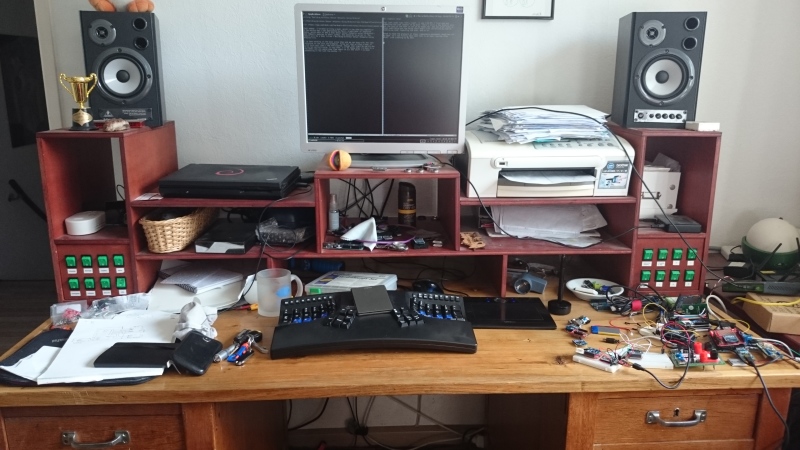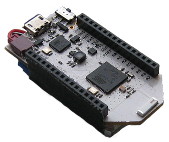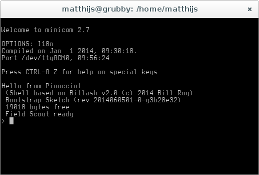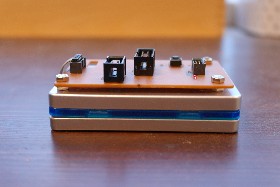These are the ramblings of Matthijs Kooijman, concerning the software he hacks on, hobbies he has and occasionally his personal life.
Most content on this site is licensed under the WTFPL, version 2 (details).
Questions? Praise? Blame? Feel free to contact me.
My old blog (pre-2006) is also still available.
See also my Mastodon page.
- Raspberry pi powerdown and powerup button (45)
- Repurposing the "Ecobutton" to skip spotify songs using Linux udev/hwdb key remapping (3)
- How to resize a cached LVM volume (with less work) (2)
- Reliable long-distance Arduino communication: RS485 & MODBUS? (6)
- USB, Thunderbolt, Displayport & docks (21)
| Sun | Mon | Tue | Wed | Thu | Fri | Sat |
|---|---|---|---|---|---|---|
| 1 | 2 | 3 | 4 | 5 | 6 | |
| 7 | 8 | 9 | 10 | 11 | 12 | 13 |
| 14 | 15 | 16 | 17 | 18 | 19 | 20 |
| 21 | 22 | 23 | 24 | 25 | 26 | 27 |
| 28 | 29 | 30 |
(...), Arduino, AVR, BaRef, Blosxom, Book, Busy, C++, Charity, Debian, Electronics, Examination, Firefox, Flash, Framework, FreeBSD, Gnome, Hardware, Inter-Actief, IRC, JTAG, LARP, Layout, Linux, Madness, Mail, Math, MS-1013, Mutt, Nerd, Notebook, Optimization, Personal, Plugins, Protocol, QEMU, Random, Rant, Repair, S270, Sailing, Samba, Sanquin, Script, Sleep, Software, SSH, Study, Supermicro, Symbols, Tika, Travel, Trivia, USB, Windows, Work, X201, Xanthe, XBee
 &
&
(With plugins: config, extensionless, hide, tagging, Markdown, macros, breadcrumbs, calendar, directorybrowse, feedback, flavourdir, include, interpolate_fancy, listplugins, menu, pagetype, preview, seemore, storynum, storytitle, writeback_recent, moreentries)
Valid XHTML 1.0 Strict & CSS
Past summer, I've been writing a book, which is now nearing completion. A few months ago I was approached by Packt, a publisher of technical books, which want to add a book about sensor networks using Arduino and XBee modules to their lineup, and asked me to write it. The result will be a book titled "Building Wireless Sensor Networks Using Arduino".
I've been working on the book since then and am now busy with the last revisions on the text and examples. Turns out that writing a book is a lot more work than I had anticipated, though that might be partly due to my own perfectionism. In any case, I'll be happy when I'm done in a few weeks and can spend some time again on all the stuff I've been postponing in the last few months :-)
Yay! Last night (yes really night, it was 4:30 AM) I finalized and submitted the last chapter of my book. There's still a few details left, but the text of the book is out of my hands now, and the great folks at Packt publishing are now doing their magic with correcting my English, testing my code, layouting the book, and so on.
Great to have the pressure of these (repeatedly postponed) deadlines off my back, so I can finally take some time to do some long-due other stuff. Like cleaning up my desk:


I was prompted to write this post after I got an email from another S270 user, thanking me for all the info I posted about these machines. He was also having power supply issues, with all the same resulting troubles I had (keyboard stuttering, USB issues, etc.).
He said he fixed this by simply replacing the notebook power supply and all his problems were gone. Interestingly I had already tried that and it didn't work for me, so we were having different problems.
Another reason for writing this post is that I actually fixed my power supply issues a few months ago. I can't really remember what prompted me too look into it again, but this time I didn't have anything to lose - I wasn't really using Xanthe for anything anymore. I opened up the casing completely, took out the mainboard to properly access the underside.
The power connector felt like it was fixed to the mainboard pretty tightly, but I put my soldering iron to it anyway. I just let the solder reflow nicely.
To my surprise, this actually worked. The power connector now powers the laptop properly, without any blinking. I suspect that the solder in one of the contacts had split and caused a flakey connection.
So, Xanthe is still idling around in a cabinet somewhere, but at least she's now usable as a backup or LARP prop sometime :-)
Last year, I got myself an Atmel JTAGICE3 programmer, in order to speed up programming my Pinoccio boards. This worked great, except that as can be expected of the tiny flatcable they used (1.27mm connector and even smaller flatcable), the cable broke within 6 months.
Atmel support didn't want to replace it, because it wasn't broken when I first unpacked the programmer, and told me to find and buy a new cable myself. Since finding these cables turns out to be tricky, and I didn't feel like breaking another cable in 6 months, I designed a converter board.

The Pinoccio Scout is a wonderful Arduino-like microcontroller board that has builtin mesh networking, a small form factor and a ton of resources (at least in Arduino terms: 32K of SRAM and 256K of flash).
However, flashing a new program into the scout happens through a serial port at 115200 baud. That's perfectly fine when you only have 32K of flash or for occasional uploads. But when you upload a 100k+ program dozens of times per day, it turns out that that's actually really slow! Uploading and verifying a 104KiB sketch takes over 30 seconds, just too long to actually wait for it (so you do something else, get distracted, and gone is the productivity).

While trying to track down a reset bug in the Pinoccio firmware, I
suspected something was going wrong in the dynamic memory management
(e.g., double free, or buffer overflow). For this, I wrote some code to
log all malloc, realloc and free calls, as wel as a python script
to analyze the output.
This didn't catch my bug, but perhaps it will be useful to someone else.
In addition to all function calls, it also logs the free memory after
the call and shows the return address (e.g. where the malloc is called
from) to help debugging.
It uses the linker's --wrap, which allows replacing arbitrary
functions with wrappers at link time. To use it with Arduino, you'll
have to modify platform.txt to change the linker options (I hope to
improve this on the Arduino side at some point, but right now this seems
to be the only way to do this).


When working with an Arduino, you often want the serial console to stay open, for debugging. However, while you have the serial console open, uploading will not work (because the upload relies on the DTR pin going from high to low, which happens when opening up the serial port, but not if it's already open). The official IDE includes a serial console, which automatically closes when you start an upload (and once this pullrequest is merged, automatically reopens it again).
However, of course I'm not using the GUI serial console in the IDE, but minicom, a text-only serial console I can run inside my screen. Since the IDE (which I do use for compiling uploading, by calling it on the commandline using a Makefile - I still use vim for editing) does not know about my running minicom, uploading breaks.
I fixed this using some clever shell scripting and signal-passing. I
have an arduinoconsole script (that you can pass the port number to
open - pass 0 for /dev/ttyACM0) that opens up the serial console, and
when the console terminates, it is restarted when you press enter, or a
proper signal is received.
The other side of this is the Makefile I'm using, which kills the serial console before uploading and sends the restart signal after uploading. This means that usually the serial console is already open again before I switch to it (or, I can switch to it while still uploading and I'll know uploading is done because my serial console opens again).
For convenience, I pushed my scripts to a github repository, which makes it easy to keep them up-to-date too:


(This post has been lying around as a draft for a few years, thought I'd finish it up and publish it now that Tika has finally been put into production)
A few months years back, I purchased a new server together with some friends,
which we've named "Tika" (daughter of "Tita Tovenaar", both wizards
from a Dutch television series from the 70's). This name combine's
Daenney's "wizards and magicians" naming scheme with my "Television
shows from my youth" naming schemes quite neatly. :-)
It's a Supermicro 5015A rack server sporting an Atom D510 dual core processor, 4GB ram, 500GB of HD storage and recently added 128G of SSD storage. It is intended to replace Drsnuggles, my current HP DL360G2 (which has been very robust and loyal so far, but just draws too much power) as well as Daenney's Zeratul, an Apple Xserve. Both of our current machines draw around 180W, versus just around 20-30W for Tika. :-D You've got to love the Atom processor (and it probably outperforms our current hardware anyway, just by being over 5 years newer...).
Over the past three years, I've been working together with Daenney and Bas on setting up the software stack on Tika, which proved a bit more work than expected. We wanted to have a lot of cool things, like LXC containers, privilege separation for webapplications, a custom LDAP schema and a custom web frontend for user (self-)management, etc. Me being the perfectionist I am, it took quite some effort to get things done, also producing quite a number of bug reports, patches and custom scripts in the process.
Last week, we've finally put Tika into production. My previous server, drsnuggles had a hardware breakdown, which forced me wrap up Tika's configuration into something usable (which still took me a week, since I seem to be unable to compromise on perfection...). So now my e-mail, websites and IRC are working as expected on Tika, with the stuff from Bas and Daenney still needing to be migrated.
I also still have some draft postings lying around about Maroesja, the custom LDAP schema / user management setup we are using. I'll try to wrap those up in case others are interested. The user management frontend we envisioned hasn't been written yet, but we'll soon tire of manual LDAP modification and get to that, I expect :-)

Last week, I got a fancy new JTAGICE3 programmer / debugger. I wanted to achieve two things in my Pinoccio work: Faster uploading of programs (Having 256k of flash space is nice, but flashing so much code through a 115200 baud serial connection is slow...) and doing in-circuit debugging (stepping through code and dumping variables should turn out easier than adding serial prints and re-uploading every time).
In any case, the JTAGICE3 device is well-supported by avrdude, the
opensource uploader for AVR boards. However, unlike devices like the
STK500 development board, the AVR dragon programmer/debugger and the
Arduino bootloader, which use an (emulated) serial port to communicate,
the JTAGICE3 uses a native USB protocol. The upside is that the data
transfer rate is higher, but the downside is that the kernel doesn't
know how to talk to the device, so it doesn't expose something like
/dev/ttyUSB0 as for the other devices.
avrdude solves this by using libusb, which can talk to USB devices
directly, through files in /dev/usb/. However, by default these device
files are writable only by root, since the kernel has no idea what kind
of devices they are and whom to give permissions.
To solve this, we'll have to configure the udev daemon to create the
files in /dev/usb with the right permissions. I created a file called
/etc/udev/rules.d/99-local-jtagice3.rules, containg just this line:
SUBSYSTEM=="usb", ATTRS{idVendor}=="03eb", ATTRS{idProduct}=="2110", GROUP="dialout"
This matches the JTAGICE3 specifically using it's USB vidpid (03eb:2110,
use lsusb to find the id of a given device) and changes the group for
the device file to dialout (which is also used for serial devices on
Debian Linux), but you might want to use another group (don't forget to
add your own user to that group and log in again, in any case).

I recently got myself an Xprotolab Portable, which is essentially a tiny, portable 1Msps scope (in hindsight I might have better gotten the XMinilab Portable which is essentially the same, but slightly bigger, more expensive and with a bigger display. Given the size of the cables and carrying case, the extra size of the device itself is negligable, while the extra screen size is significant).
In any case, I wanted to update the firmware of the device, but the
instructions refer only to a Windows-only GUI utility from Atmel, called
"FLIP". I remembered seeing a flip.c file inside the avrdude sources
though, so I hoped I could also flash this device using avrdude on
Linux. And it worked! Turns out it's fairly simple.
- Activate the device's bootloader, by powering off, then press K1 and keep it pressed while turning the device back on with the menu key. The red led should light up, the screen will stay blank.
- Get the appropriate firmware hex files from the Xprotolab Portable page. You can find them at the "Hex" link in the top row of icons.
Run avrdude, for both the application and EEPROM contents:
sudo avrdude -c flip2 -p x32a4u -U application:w:xprotolab-p.hex:i sudo avrdude -c flip2 -p x32a4u -U eep:w:xprotolab-p.eep:iI'm running under sudo, since this needs raw USB access to the USB device. Alternatively, you can set up udev to offer access to your regular user (like I did for the JTAGICE3), but that's probably too much effort just for a one-off firmware update.
Done!
Note that you have to use avrdude version 6.1 or above, older versions don't support the FLIP protocol.


